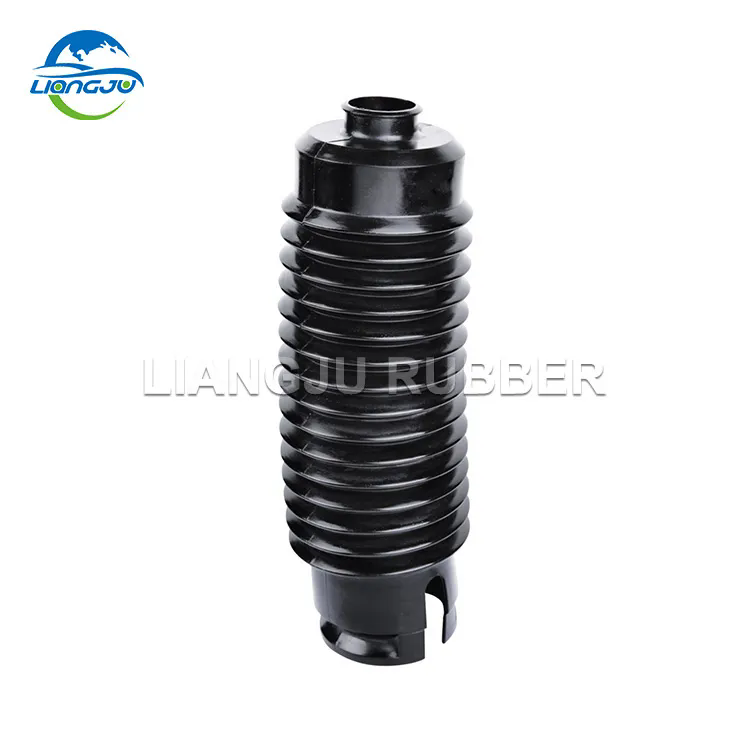Why Are Automotive Rubber Parts Essential for Vehicle Performance and Safety?
2024-12-11
Automotive rubber parts are often overlooked, yet they are crucial for the overall performance, safety, and comfort of modern vehicles. From reducing vibrations to sealing out moisture, these components play vital roles that impact the vehicle's longevity and reliability. But what makes automotive rubber parts so indispensable in the automotive industry? Let’s explore the importance of these components and why they are a critical part of every vehicle.
1. What Role Do Rubber Parts Play in Vehicle Suspension?
One of the key uses of rubber parts in vehicles is within the suspension system. Rubber bushings, mounts, and isolators are used to reduce the noise, vibration, and harshness (NVH) that occurs while driving. These parts help absorb the shocks and bumps from the road, ensuring a smoother ride. Without them, the suspension system would be less effective, leading to a rougher driving experience and faster wear and tear on other parts of the vehicle.
2. How Do Rubber Parts Contribute to Vehicle Sealing?
Rubber is known for its excellent sealing properties, which is why it is extensively used in gaskets and seals within a vehicle. These rubber parts ensure that critical areas, like the engine, doors, windows, and fuel systems, are properly sealed from dust, dirt, moisture, and other contaminants. Rubber seals prevent leaks, help maintain cabin comfort, and protect sensitive mechanical components from environmental damage, ultimately contributing to the vehicle's longevity.
3. Why Is Rubber Used in Vehicle Tires?
The most obvious and essential application of rubber in vehicles is in the tire. Tires are made from a blend of rubber compounds that provide the necessary traction, flexibility, and durability to ensure safe handling, comfort, and fuel efficiency. The rubber used in tires is carefully engineered to resist wear while providing optimal performance in various weather conditions, making them one of the most important automotive rubber parts for both safety and efficiency.
4. How Do Rubber Parts Impact Noise and Vibration Reduction?
Rubber components are highly effective in reducing noise and vibrations in vehicles. Components like rubber seals, mounts, and bushings work to absorb and dissipate vibrations caused by the engine, road surface, and other mechanical operations. This is especially important for the comfort of passengers, as excessive vibrations and noise can lead to a less enjoyable driving experience. In luxury and high-performance cars, these rubber parts play a critical role in maintaining a quiet and smooth ride.
5. Why Are Rubber Parts Critical for Safety Features?
In addition to their comfort-related benefits, automotive rubber parts are integral to the safety systems in vehicles. For instance, rubber components are used in airbag deployment systems, brake lines, and shock absorbers. These parts need to withstand extreme conditions, such as high temperatures, pressure, and the force of impact. Rubber's durability and resistance to wear make it the ideal material for ensuring that critical safety features function correctly in the event of an emergency.
6. What Is the Importance of Rubber in Engine Components?
Inside the engine, rubber parts are used in various components like belts, hoses, and gaskets. These rubber components help ensure the engine runs smoothly by maintaining the proper functioning of the cooling system, air intake, and exhaust systems. The rubber hoses prevent leaks of vital fluids, while gaskets create tight seals to prevent oil and coolant from escaping. Without these components, the engine would experience decreased efficiency, increased wear, and a higher risk of failure.
7. How Does Rubber Help with Weather Protection?
Weatherproofing is another crucial aspect where rubber parts come into play. Rubber seals are used to prevent water from entering the vehicle through doors, windows, and the sunroof. During rain or snow, rubber seals act as barriers to keep the interior dry and prevent rust or corrosion in vulnerable areas of the vehicle. Rubber is also used in weatherstripping, which helps maintain temperature control inside the vehicle, ensuring that it remains comfortable regardless of external weather conditions.
8. What Are the Environmental Benefits of Automotive Rubber Parts?
While rubber has been traditionally associated with synthetic materials, many automotive manufacturers are moving toward eco-friendly rubber components. This shift is driven by an increasing focus on sustainability in the automotive industry. Recycled rubber and natural rubber are now being used in some parts, helping reduce the environmental impact. These environmentally-conscious choices contribute to the overall sustainability of the automotive sector, especially as electric vehicles and eco-friendly models become more popular.
9. Why Are High-Performance Rubber Parts Essential for Electric Vehicles?
Electric vehicles (EVs) have unique needs when it comes to rubber components. Due to the increased focus on performance and range, rubber parts used in EVs are designed to withstand higher pressures and temperatures. The increased weight and torque in EVs can also place more strain on rubber suspension components and tires. Therefore, advanced rubber technology is used in various parts of electric vehicles, including suspension bushings, seals, and tires, to ensure optimal performance and durability.
10. What Are the Challenges in Manufacturing Automotive Rubber Parts?
Manufacturing automotive rubber parts requires precision and attention to detail. Rubber components must meet strict quality standards to ensure their durability and reliability. Factors such as temperature resistance, chemical stability, and wear resistance must be carefully balanced in the formulation of rubber compounds. Advances in rubber molding and 3D printing technologies are also helping to create more complex and specialized rubber parts for vehicles, allowing for more efficient production processes and customized solutions.
Automotive rubber parts are essential in making vehicles perform at their best. Whether it's ensuring smooth suspension, maintaining vehicle integrity, or contributing to safety and comfort, these components play a vital role in the everyday functioning of modern cars. As technology continues to advance, the development of new rubber materials and manufacturing techniques will ensure that automotive rubber parts remain an integral part of vehicle design for years to come.



